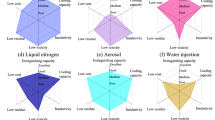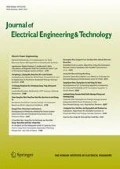Abstract
Kimchi refrigerators are popular electronic products used by over 90% of Korean households. However, in recent years, because fires frequently occur in kimchi refrigerators used for more than 15 years, it is urgent to determine the cause and prepare countermeasures. In particular, fires often occur in kimchi refrigerators produced from 2001 to 2004 by a specific manufacturer. In this study, the relay structure was identified as the cause of the problem as it directly influenced the fire. Because the relay’s compressor-driven contact point was directed to the bottom at the electrode’s direction, the arc generated at the contact point when the compressor is turned on or off deteriorated the relay’s insulator. In addition, the metal carbide of the contact point generated by the arc further facilitated the insulator’s deterioration. The continuous deterioration caused a tracking phenomenon and expanded into a fire. From the results, problems in the design of the relay contacts were confirmed, and countermeasures were suggested.























Similar content being viewed by others

Availability of Data and Material
The data relating to this work can be obtained from the corresponding author upon reasonable request.
Code Availability
Not applicable.
References
Retail Magazine (2013) Kimchi refrigerator market trend. Product trend. Retail Magazine. http://www.retailing.co.kr/article/market.php?CN=120&mode=view&art_idx=1140&skey=art_title&stype1=54. Accessed 5 June 2020
Ahn SS, Lee SS (2013) 2013 Domestic kimchi industry trend and consumer kimchi plan survey. Resource document. Nonghyup Economic Research Institute. https://wkiss.wikim.re.kr/board/pdfFile.do?idx=19&refIdx=2195&boardID=trend&PID=040201. Accessed 5 June 2020
The Ministry of Public Safety and Security (2020) National fire data system. Database. https://www.nfds.go.kr/stat/general.do. Accessed 8 July 2020
Korea Consumer Agency (2017) Kimchi refrigerator fire accident trend analysis. Database. http://www.ciss.go.kr/www/selectBbsNttList.do. Accessed 10 July 2020.
Park SH (2020) The results of analysis of major fire cases in kimchi refrigerators. Provincial Protection and Prevention Division–13259. Jeollabuk-do Fire Department Headquarters, Jeollabuk-do, South Korea
Kim, J.H. (2020). Kimchi refrigerator fire trend analysis over the past 5 years (On-site response team-20369). Seoul Metropolitan Fire and Disaster Headquarters, South Korea
Lee JH, Station BF, Choi J, Choi DM (2016) A study on the fire cause of expanding burning fire analysis and kimchi refrigerator. J Korean Soc Disaster Prev. https://doi.org/10.9798/KOSHAM.2016.16.6.229
Park NK, Ji HK, Song JY (2020) A study on the fire risk of the kimchi refrigerator through case analysis of fire accidents. J Korean Soc Saf. https://doi.org/10.14346/JKOSOS.2020.35.2.1
Munhwa Broadcasting Corporation (2020) [MBC 5 minute cut] The cause of the fire, Kimchi refrigerator!. https://www.youtube.com/watch?v=-Q7kZd-vYJw. Accessed 15 May 2020.
Kim TH, Park JT (2020) Legal and safety appraisal-2002-W-3958. National Forensic Service, South Korea
Park JY, Kim HS (2020) Fire appraisal report-200602074401022. National Fire Research Institute of Korea, South Korea
Dricot F, Reher HJ (1994) Survey of arc tracking on aerospace cables and wires. IEEE Trans Dielectrics Electr Insul. https://doi.org/10.1109/94.326657
Agency NFP (2017) NFPA 921: Guide for fire and explosion investigations, 2017th edn. National Fire Protection Agency, Quincy, MA
Babrauskas V (2005) Mechanisms and modes for ignition of low-voltage PVC-insulated electrotechnical products. Fire Mater. https://doi.org/10.1002/fam.900
Babrauskas V (2004) Arc beads from fires: Can ‘cause’ beads be distinguished from ‘victim’ beads by physical or chemical testing? J Fire Prot Eng. https://doi.org/10.1177/1042391504036450
Choi SH, Huh CS (2019) Analysis of magnetic arc reduction of relay contacts. J Korean Inst Electr Electron Mater Eng. https://doi.org/10.4314/JKEM.2019.32.3.234
Park J (2020) Notification of the analysis result of the cause of an accident related to a product (kimchi refrigerator) with a large number of fires (Safety Research Department-5829). Korea Electrical Safety Corporation, South Korea
Choi YG (2020) Winia dimchae kimchi refrigerator produced before May 2005, large-scale voluntary recall. Press release. Korean Agency of Technology and Standards. https://www.kats.go.kr/cwsboard/board.do?mode=download&bid=128&cid=21968&filename=21968_202012020927086270.hwp. Accessed 2 Dec 2020
Acknowledgements
This work was supported by the grant funded by Korea Electrical Safety Corporation (Grant No. 2020-01-01).
Funding
This work was supported by the grant funded by Korea Electrical Safety Corporation (Grant No. 2020–01-01).
Author information
Authors and Affiliations
Contributions
Conceptualization: JP; Project administration: JP; Formal analysis: JP; Investigation: WSC, SJH, KMP; Validation: YHK, SBB; Writing—original draft preparation: JP; Resources: JP, WSC, SJH, KMP; Supervision: SBB.
Corresponding author
Ethics declarations
Conflict of interests
The authors have no conflicts of interest to declare that are relevant to the content of this article.
Additional information
Publisher's Note
Springer Nature remains neutral with regard to jurisdictional claims in published maps and institutional affiliations.
Rights and permissions
About this article
Cite this article
Park, J., Ko, Y.H., Choi, W.S. et al. Importance of Designing a Relay Structure by Identifying the Cause of Ignition in Kimchi Refrigerators. J. Electr. Eng. Technol. 16, 3289–3298 (2021). https://doi.org/10.1007/s42835-021-00798-2
Received:
Revised:
Accepted:
Published:
Issue Date:
DOI: https://doi.org/10.1007/s42835-021-00798-2



